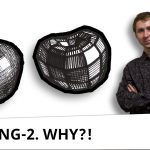What is shading? Examples of shading on the sphere, cylinder and cube
What is shading? Examples of shading on the sphere, cylinder and cube
Summary:
- We discern the form of things by the disposition of shadows on them. Showing shadows in an image is a good way to convey the form of an object (but it’s not the only way, for example you can convey form with lines alone).
- On each object that is lit by a light source, there are:
- Highlight – The reflection of the source of light, or, in other words, an area which is brighter than the light area and reflects the source of light into the eye of the viewer.*
- Light area
- Middle tone area -The intermediate area between light and form shadow.
- Core shadow -The surface of the object where the light from the light source doesn’t reach.
- Reflected light which is lighter than the shadow.
- Cast shadow – The area of the environment which is in shadow because the object blocks the light source from this area.
- A light beam reflects from surfaces and flies in straight lines. The reflected light area appears when the light from the light source falls on an object not directly but reflects from the environment. In the video I show how the light reflects from the table. In real life there are also reflected lights from other objects (for example, a jar can have a colored spot from an apple placed close to a jar, reflected light from the wall, etc.).
- The displacement of the areas of light from the light source is called “shading.”
- If the surface of the object is matte the borderline of the highlight is blurred, and if the surface is glossy it can be possible to see the shape of the light source (window or lamp) reflected in the object.
- Note that a matte surface can scatter light from a bundle of parallel light rays in many different directions (which precisely depends on the surface properties), while a glossy surface reflects light rays with an angle incidence.
- The border of cast shadow is sharper closer to the object and more blurred when it’s farther away.2* In other words, a highlight is like looking in a mirror. In the mirror objects move when you move. The highlight area on the object is brighter than light and shifts if you move your head, while the light and shadow stay in place when you move. This happens because there should be a right angle on the surface to reflect the light source into your eye, and it changes when you move.
Recent Posts



